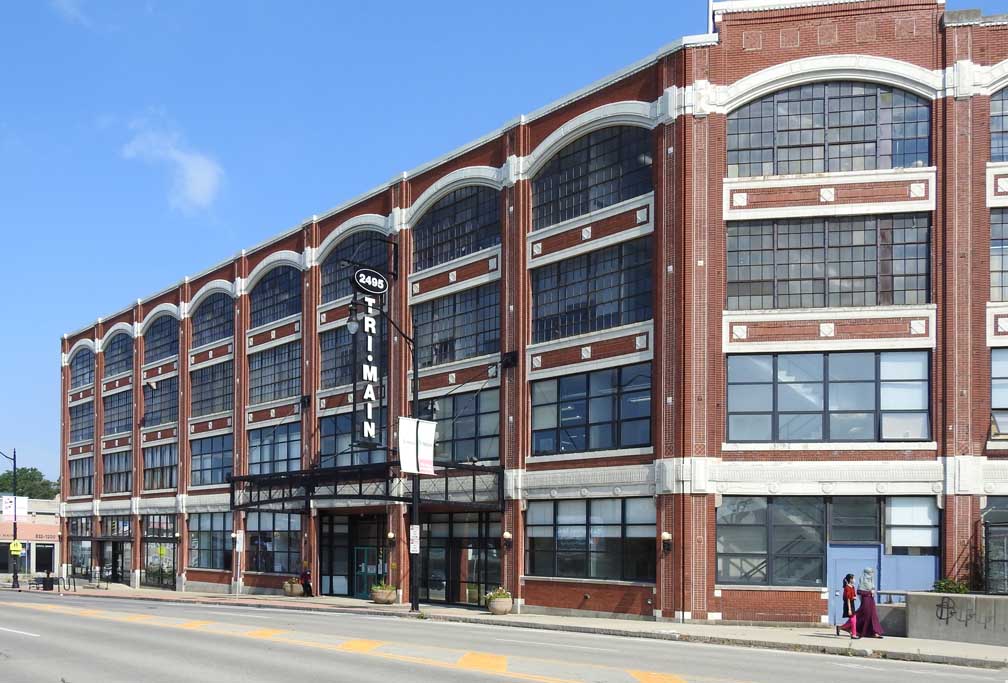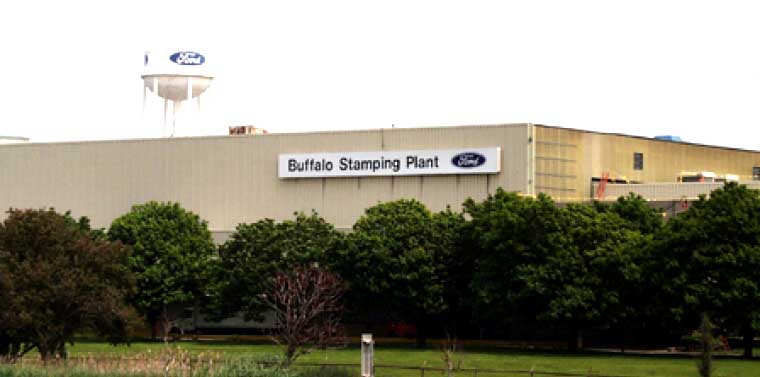Ford Motor Company in Buffalo
|
The American
Body
Company made tens of thousands of touring bodies
for Ford's Model T from 1910 through the early 1920s.
When Ford took over Lincoln in 1921, it follows that American was amongst the firms chosen by Lincoln to produce bodies for the Lincoln Model L. American specialized in touring bodies, but built some closed bodies starting in the mid-teens. |
|
Kahn or Graham? While
a few "branch assembly plants" operated here and there,
building up cars from knockdown
kits (located in Buffalo, Kansas City, Long
Island City, and Minneapolis), the initiative to build a network
of assembly plants began in December 1911, , when Ford's
board of directors sent James Couzens to California in "the
interest of establishing Branch Houses, Warehouses, or to make
other arrangements for the handling of our business as may
seem necessary." Rather than follow their exact orders,
Couzens came back with the suggestion to build smaller
factories across the country that would assemble Model Ts from
parts supplied by Ford's foundries and stamping operations in
Highland Park, thus saving Ford from the expense of shipping
completed Model Ts all over the country.
While Albert Kahn designed the aforementioned Highland Park [Detroit] and, later, the River Rouge [Dearborn] plant for Ford, the company turned to Seattle-based architect John Graham to design its Model T assembly plants, all in more or less the same multi-story, factory-slash-showroom pattern. Parts get delivered to the upper floors, usually via rail and a crane system, and down to the ground floor rolls a completed Ford Model T, either for sale in the assembly plant's showroom or for distribution to regional dealerships. Construction of the assembly plants began in 1912 and lasted only until 1915 or so, when the assembly line made the multi-story format impractical. ... there's been no real effort to catalog them until now. We've made an effort to not only list each of the Model T assembly plants built under Graham's oversight, but also to determine their exact locations, how long Ford used them, and what's happened to them since. So, in alphabetical order of the cities in which they were built: Buffalo, New York - 2495 Main Street; built 1915, assembly started December 1915, assembly relocated to Fuhrman Boulevard plant and building sold 1931; redeveloped into the Tri-Main Center. - Daniel Strohl , "The Houses that T built (and that built the T), Hemmings, Dec 13, 1918 (online August 2020) |
|
Ford
History in Buffalo
 2495 Main Street ("major facility near Main and Rodney") Photo © 2017 Chuck LaChiusa "Buffalo could have been Detroit," [Jim] Sandoro said of Buffalo's automotive past. "Henry Ford came here in the early 1900s for an auto show. Ford wanted to build a major assembly plant here, but the city fathers didn't want to give him any incentives, so he went elsewhere." Elsewhere was Detroit, where Ford built what was to be the company's main plant at River Rouge. Originally from nearby Dearborn, Ford had gone to Detroit in 1879 as a machinist's apprentice and went on to become a mechanical engineer there before building his first automobile in 1903. "Buffalo was a major business center. It had power, water, skilled craftsmen and a major rail yard. Canada was nearby and you could get to Europe through the Great Lakes. And, we had good roads early on," Sandoro says. Despite that supposed setback, Ford has been a major player in Buffalo's automotive past, as well as its present -- first with its assembly plants and later with the huge stamping plant in Woodlawn. Even though Henry Ford built his main production facilities near Detroit, he had been assembling Fords in Buffalo since 1910 and had a major facility near Main and Rodney in Buffalo. In 1938, Ford opened a much larger assembly plant on Fuhrmann Boulevard and its pre-Skyway intersection with Ohio Street. It had the advantage of being right on the water so lake freighters could load and unload parts and product easily. That plant produced an estimated 2 million Fords in the next 20 years before ending production in 1958. The building is now owned by the Niagara Frontier Transportation Authority. Ford opened its Lackawanna stamping plant in 1950. - Dale English, WNY Has Helped Fuel Auto Industry Growth (online August 2020) |
 Ford Motor Co. Fuhrmann Assembly Plant/Terminal A 901 Fuhrmann Blvd. near Ohio St. Photo © 2020 Chuck LaChiusa |
 3663 Lake Shore Rd, Hamburg, NY Buffalo Stamping Plant manufactures sheetmetal stampings and welded sub-assemblies for Ford Motor Company's automotive car and truck assembly plants in the USA, Canada and Mexico. The facility was opened in 1950. |
 Restored 1910 Ford Model T Larkin Delivery Truck Larkin Co. Terminal Warehouse / Larkin at Exchange Photo © 2006 Chuck LaChiusa |

web site consulting by
ingenious, inc.